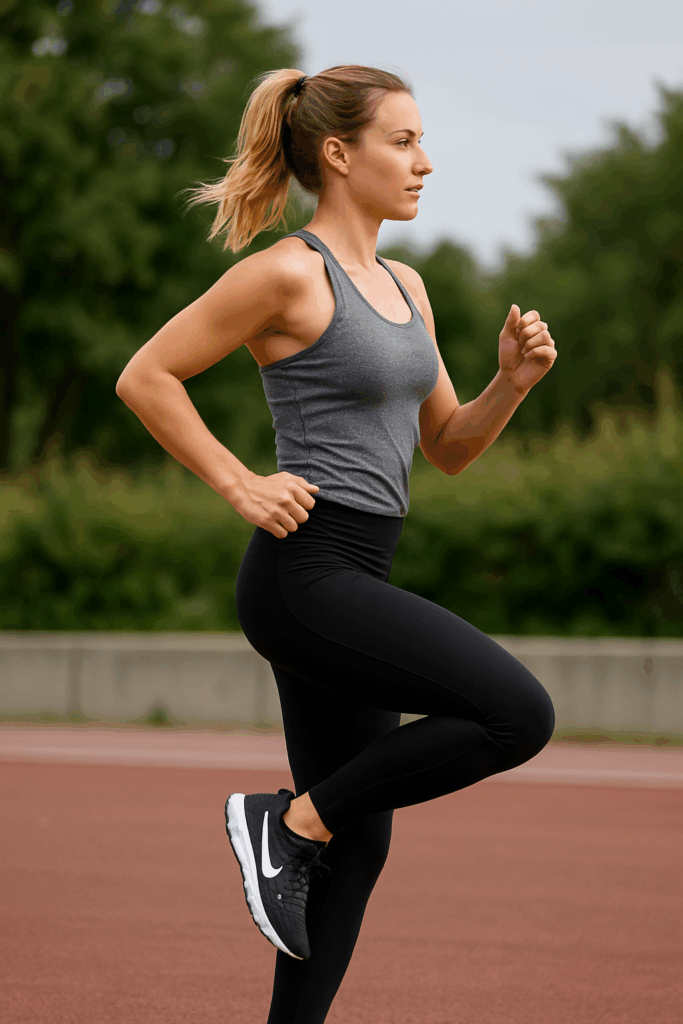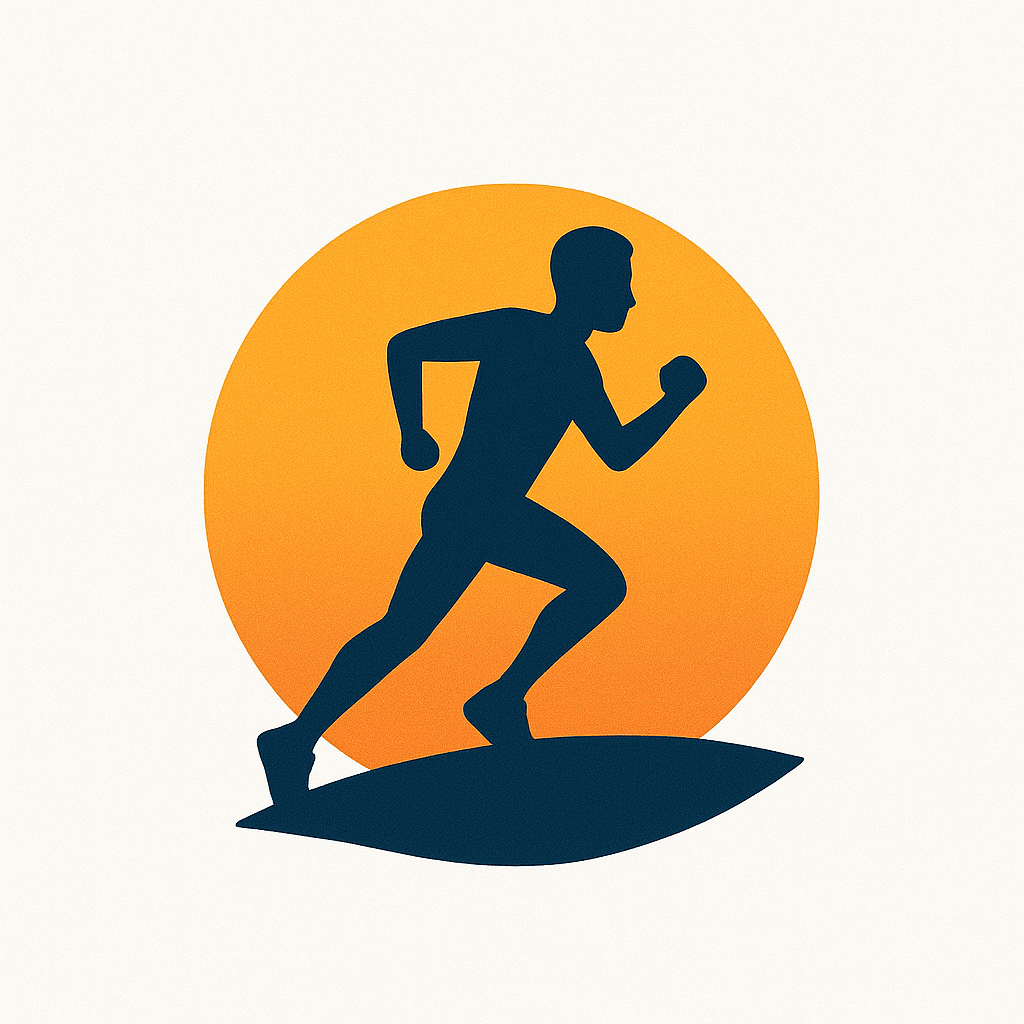By Andreas Wagner – Experienced Runner, Not a Training Professional
Looking to improve your running form, build strength, and stay injury-free? Then it’s time to give an often-overlooked drill the attention it deserves: Butt Kicks.
They might look funny. They might remind you of gym class warm-ups. But don’t be fooled – when performed correctly, butt kicks are a powerful tool for any runner who wants to train smarter, run faster, and reduce injury risk.
In this article, I’ll explain what butt kicks are, why they work, and how to use them effectively in your training. And no – I’m not a doctor or physiotherapist, just an experienced runner who’s seen the benefits firsthand.
What Are Butt Kicks?
Butt kicks are a dynamic running drill where you jog in place or move forward while kicking your heels up toward your glutes with each step. They’re simple, but incredibly effective when it comes to activating the hamstrings, improving neuromuscular coordination, and enhancing stride efficiency.
The Benefits of Butt Kicks for Runners
Let’s break down what this deceptively easy movement does for your running:
1. Hamstring Activation
Butt kicks force your hamstrings to fire more actively. This is critical, especially if you’ve been sitting all day and your glutes and hamstrings are a bit “asleep”. Waking them up before a run helps you move more efficiently and powerfully.
2. Improved Running Form
Many runners overstride or let their feet drag. Butt kicks train you to lift your heels and engage a quick turnover, mimicking an efficient running stride. The result? Better form and less wasted energy.
3. Injury Prevention
By activating your posterior chain (glutes, hamstrings, calves), you reduce the risk of overloading your quads or developing imbalances that can lead to injury – particularly in the knees and lower back.
4. Warm-Up That Actually Works
Instead of just walking or jogging lightly before a run, dynamic drills like butt kicks raise your heart rate, increase blood flow, and prep your muscles for action. That means a smoother, safer run from the first step.

How to Do Butt Kicks the Right Way
Like any exercise, form matters. Here’s how to do butt kicks properly:
- Stand tall, shoulders relaxed, core engaged.
- Begin jogging slowly in place or moving forward.
- With each step, kick your heel up toward your glute. It’s not about force, but control.
- Keep your knees pointing down – avoid pulling them up like in high knees.
- Use a short, quick stride to simulate natural running cadence.
- Arms should move naturally at your sides to help with rhythm and balance.
💡 Pro Tip: Start with 2 sets of 20–30 seconds. Over time, build up to 3–4 sets as part of your warm-up routine.
When and How to Add Butt Kicks to Your Training
Wondering where they fit in? Here are the best times to include butt kicks:
✅ Before a Run (Warm-Up)
Add them after your mobility work and before your main run. They’re perfect for getting your body ready for speedwork, hill sprints, or tempo runs.
✅ During a Drill Session
Combine them with other running drills like high knees, A-skips, and bounding for a full warm-up circuit. This can be especially effective on track days.
✅ As Active Recovery
Light butt kicks can help flush out the legs after a hard effort or during recovery intervals in interval sessions.
Common Mistakes to Avoid
Even simple drills can go wrong if done carelessly. Watch out for these pitfalls:
- ❌ Leaning too far forward – Stay upright to keep your form efficient.
- ❌ Overkicking – Your heels should touch the glutes, not slam into them.
- ❌ Swinging your arms wildly – Controlled arm movement helps with balance.
- ❌ Letting knees come too high – This turns it into a different drill.
Butt Kicks vs. High Knees – What’s the Difference?
Both are popular drills, and both serve different purposes.
- Butt Kicks focus on hamstring activation and leg recovery.
- High Knees emphasize hip flexor engagement and knee drive.
For a well-rounded warm-up, I often do both. High knees to fire up the front side of the body, butt kicks to activate the backside.
My Personal Experience with Butt Kicks
I’ll be honest: I used to skip drills. Like many runners, I thought, “I just want to run.” But over time, I learned that skipping the warm-up was costing me efficiency, form – and at times, health.
Adding drills like butt kicks has made a noticeable difference in how I run and recover. They help me feel more connected to my stride and reduce stiffness in my hamstrings, especially before speed sessions.
They take less than a minute – but the return on investment is huge.
Final Thoughts
If you’re not doing butt kicks yet, now’s the time to start. They’re simple, effective, and require zero equipment. Whether you’re training for your first 5K or chasing a marathon PR, they can make your warm-up smarter and your stride more efficient.
So next time you head out for a run, don’t just jog the first few minutes and hope your body catches up. Wake it up the right way – with drills that work. Your hamstrings (and your finish times) will thank you.
Run strong, run smart – and don’t forget the little things.
– Andreas Wagner




Leave a Reply